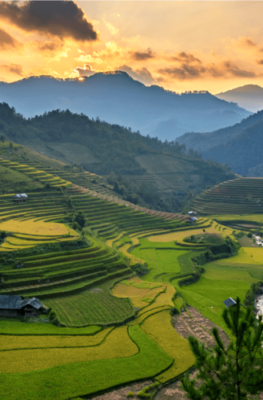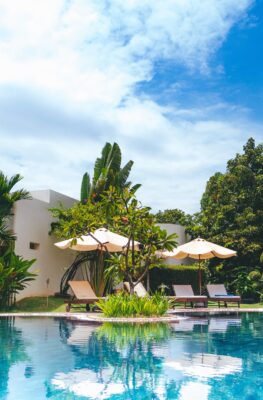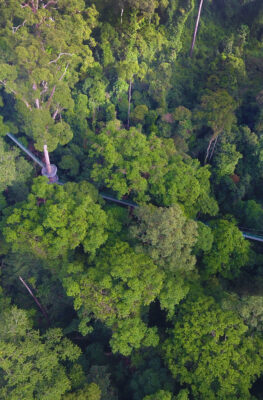Published on September 20, 2013
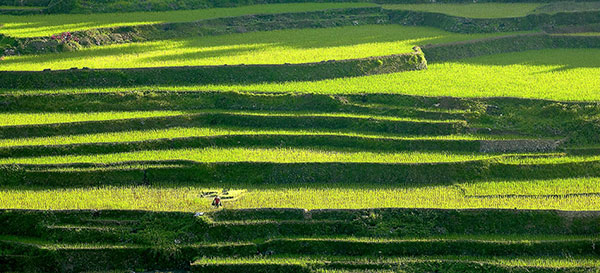
Farmers have been ploughing Southeast Asia’s fertile soil and raising livestock for thousands of years, and many of their traditional techniques remain in place, especially their rice paddy systems. Visitors are now taking advantage of the growing number of farm stays throughout the region, during which they can experience life on a farm and take part in authentic agricultural life. Several farm visits come with homestays, and crops range from fruits to vegetables and of course the staple rice, and there’s always livestock around.
Brunei Darussalam: Farm stays in Brunei remain in their infancy, with only one, Sumbiling Eco Village, presenting the opportunity to overnight in an Iban village. The village is located in remote south-western Temburong District with easy access to Ulu Temburong National Park. Though Sumbiling villagers live in a small Iban longhouse, guests reside in tents or basic rooms with baths. Most activities centre on rainforest treks and exploring the village, where guests can interact with the locals and participate in local farming chores. Source: Borneo Guide.
Cambodia: Farm stays in Cambodia can take visitors on rural Khmer experiences close to the main attractions or further afield, where they immerse into village life to see how real Khmer families live. The welcoming hosts offer authentic Khmer meals, teach simple Khmer phrases, and display traditional silk weaving techniques. Visitors can also take boat rides, go fishing, ride on a pony or ox carts to rice paddies, pedal around the villages, and enjoy traditional Khmer dancing. Farm stays in Kampong Thom Province, about 120km from Phnom Penh, attract travellers for the green landscapes and palm leaf houses. Those heading to Siem Reap can avoid the Angkor crowds with a farm stay near town, while a short drive from Phnom Penh leads to Meas family farm. Source: Tourism Cambodia.
Indonesia: Though Indonesia is some 1.8 million sq km, only 12.34 per cent of the land is arable. However, locals make great use of this area. Almost 40 per cent of the population engages in raising and harvesting palm oil, poultry, beef, forest products, cocoa, coffee, medicinal herbs, and spices. This provides plenty of opportunities for farm stays throughout the 17,000-island archipelago. Indonesia offers remote farm stays in Java, Kalimantan, Sulawesi, and Sumatra provinces, and easy-to-access authentic experiences dot the land around Jakarta and Bali. Sources: Indonesia Tourism.
Lao PDR: Lao PDR has become renowned for farm stays; in fact it’s almost impossible to avoid them. Treks in the country’s mountainous northwest lead to villages on peaks, where ethnic minorities raise cows, chickens, and pigs; farm mountain rice, and forage in the forest for food and medicinal herbs. Though still quite hilly, the nation’s central area offers more traditional farm stays in weaving villages with some livestock surrounded by flat and sometimes tiered rice paddies. Coffee is king on southern Lao PDR’s Bolaven Plateau, and several farmers and producers guide guests through the entire process from planting to picking beans. Source: Champa Holidays.
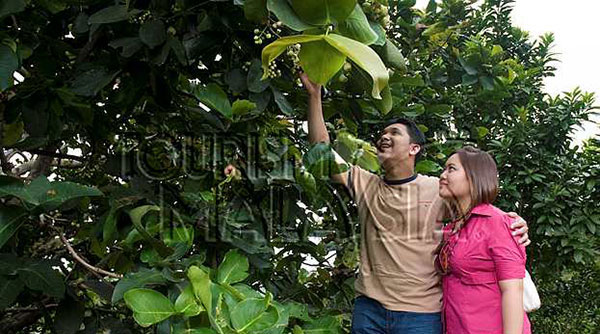
Malaysia: Fruit farming rules in Malaysia, with family-friendly stays available throughout the country. Some offer quality accommodation while others present simple yet clean rooms. The Sigar Highlands opens the door to tea plantations and strawberry farms, while Perak State’s limestone cliffs hover over the county’s juiciest pomelos and other citrus fruits such as jackfruit, starfruit, lemons, oranges, durian, and honey jambu. One farm stay in Kuala Gandah houses animals and offers elephant rides. And about an hour north of Singapore, visitors will find Malaysia’s largest sheep farm. Sources: Malaysia Travel Guide, (pic above) Tourism Malaysia.
Myanmar: Farming techniques in Myanmar are far from modern, with families using traditional tools like ploughs drawn by water buffalo to till paddy fields and raise other crops including corn, legumes, onions, spices, and sugarcane. Village life remains quite simple with bamboo or wood houses with thatched roofs, and the locals enjoy welcoming outsiders to their farms to experience their way of life. Tour companies can arrange farm visits with guides who speak the local dialects, however if you want to go it alone, rent a bicycle and pedal into a great adventure. Source: Myanmar Burma.
Philippines: The Philippines has perfected farm stays and visits by creating “WWOOF” (Willing Workers on Organic Farms), a non-profit national association that bridges the gap between consumers and environmentally-responsible farmers. Host farms offer the opportunity to learn by doing; visitors participate in daily chores, including harvesting, preparing soil for planting, weeding and seeding, milking, cleaning pens, digging trenches, and maintaining fences. Visitors also learn about the local ecology and culture while getting to meet and interact with the people. Accommodation ranges from homestays to private bungalows. The most popular farm stays are in the UNESCO World Heritage Banaue Rice Terraces that are up to 6,000 years old. Source: WWOOF Philippines.
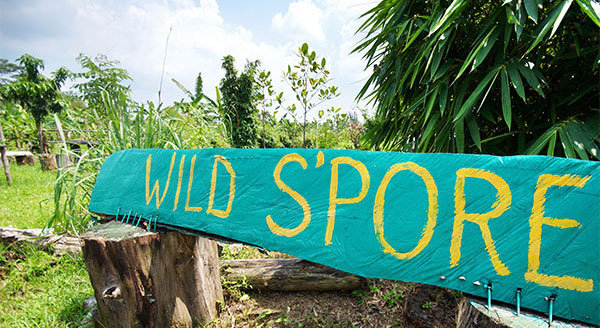
Singapore: Experience the complete opposite of Singapore’s cosmopolitan lifestyle when you explore her rustic countryside. Located in the rural suburbs at the northwest part of the island, an assortment of nurseries, organic farms, orchards, and animal farms is what lies in store. Perfect for a day’s retreat away from the bustling city for nature lovers and aspiring young explorers, Kranji Countryside offers a taste of farm living with a variety of different farms and diaries such as Bollywood Veggies, Hay Diaries and Fire Flies Health Farm. Tours are also available, so do enquire at the respective farms, especially if you’re going in a larger group. Source (and pic above): YourSingapore.
Thailand: Thailand’s farm-stay scene covers it all, from mountain fruit orchard homestays to dairy farms and vineyards with luxury tents. Some farm stays feature fish ponds, ducks, and livestock, which visitors learn to take care of. In Chiang Mai’s jungle-clad hillsides, crops range from coffee to oranges, while 100-km north in Phrao, tropical fruit pickers can bite into organic guava, longan, passion fruit, mango, rose apple, papaya, banana, and jackfruit. Dairy farm stays in Saraburi attract guests wanting to learn more about cows and have the chance to milk them, with overnights in boutique tents and even Wi-Fi access in the forest. Farms around Khao Yai National Park blossom with flowers and organic vegetables such as carrots and lettuce along with mushrooms, oranges, grapes, and pumpkins. Lop Buri farm stays offer horse rides around their vegetable gardens, while those in Ubon Ratchathani and Nakhon Ratchasima produce a wide assortment of fruit. Source (and pic below): Tourism Authority of Thailand.
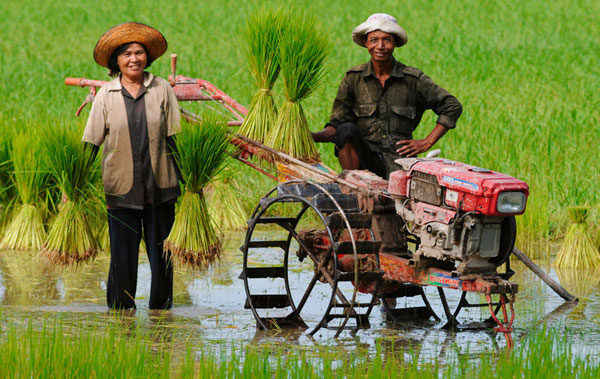
Viet Nam: Farm stays recently moved into remote rural Viet Nam’s north-central region in the fertile strip between the coast and the mountains. Activities include ploughing with buffalo, rice harvesting, bicycling on winding dirt paths through rice paddies, stopping at farming villages to interact with locals, and exploring the edge of Phong Nha–Ke Bang National Park near the Ho Chi Minh Trail. During these farm stays, visitors can also visit local markets, observe jungle scenery on the limestone karsts, swim in clear rivers, investigate caves, and spot wildlife. Source: Travelfish.




